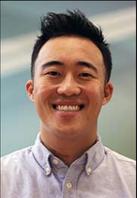2022-04-04 12:00:00 2022-04-04 13:00:00 America/Indiana/Indianapolis A framework to investigate key characteristics of digital twins and their impact on performance Edwin Kim, Ph.D. Candidate Click here to join.
A framework to investigate key characteristics of digital twins and their impact on performance
| Event Date: | April 4, 2022 |
|---|---|
| Sponsor: | Dr. Abhijit Deshmukh |
| Time: | 12:00pm EDT |
| Location: | Click here to join. |
| Priority: | No |
| School or Program: | Industrial Engineering |
| College Calendar: | Show |
ABSTRACT
The modern world of manufacturing is in the middle of an industrial revolution with the digital and physical worlds integrating through cyber-physical systems. Through a virtual model that is able to communicate with its physical system known as the Digital Twin, catered decisions can be made based on the current state of the system. The digital twin presents immense opportunities and challenges as there is a greater need to understand how these new technologies work together.
This thesis is an experimental investigation of the characteristics of the essential components of the Digital Twin. A Digital Twin Framework is developed to explore the impacts of model accuracy and update frequency on the system’s performance measure. A simple inventory management system and a more complex manufacturing plant is modeled through the framework providing a method to study the interactions of the physical and digital systems with empirical data.

